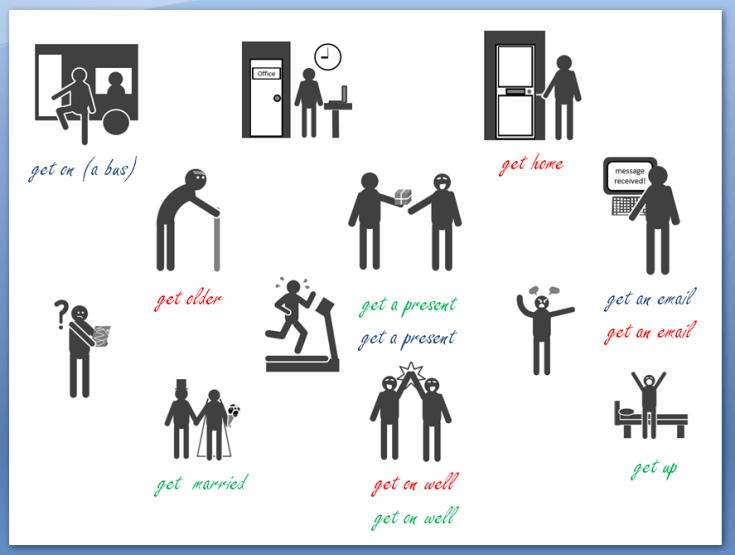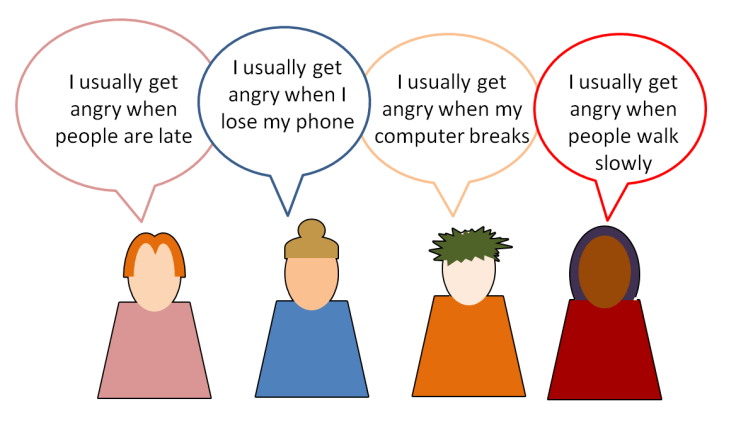Here are some games you can use for practising and revising a set of vocabulary with pictures. I have included a demonstration set but these games could be used with any lexical set with slight modifications. These games are motivating, memorable, easy to monitor and require very little preparation.
You can download the demonstration worksheet by clicking here
Board Race Variant
A ‘board race’ is fairly common idea; Divide the class into two or three teams and give each team a board pen. Give each team a section of the board and students write on the board, one answer per student, passing their team’s pen like in a relay.
You can play this game to see how much your students know within a lexical set (“Write as many animals on the board as you can, you have 3 minutes!”), grammar (“Complete this sentence: If I had a million dollars, … ), to check spelling or anything else really.
In this variant I have large picture cards stuck to the board (or projected) and students work in teams to write the vocab under the pictures. Each team uses a different coloured pen and at the end teams check each other’s answers, including spelling (two points for being first, one point for second).

Matching games
There are a few ways to use the picture and word cards together. Divide students into pairs or groups of three and give each group a set of both cards. Students match the word and picture cards as a race. Play a few rounds to allow students plenty of practice (if one group keeps winning, you can give them a slight delay as a challenge).
You can add variety to the race above by putting the card sets on opposite sides of the classroom, where students take turns and can only move the cards one at a time.
There are also some classic games you could play, like pelmanism (the matching pairs memory game), go fish and snap.
Monikers
Monikers (aka celebrities) is a a mix of mime, pictionary and descriptions you can play using the word cards. I’ve written about it before in this example here. Students play a few rounds in groups of three or four taking turns to draw a card and describe it to their group in a variety of different ways.
You can either set a different restriction for each round (e.g. “you can only use three words for your description”) or allow students choose from three options that you write on the board: (Draw, mime using only your hands or describe it silently by mouthing the words).
As a quick variant, students work in teams of 3 with a set of picture cards. They draw one at a time and say the answer together until they finish the set, racing against other teams. This is a quick way to revise and you can monitor for problems with pronunciation.
Sentence chanting
This game allows students to practise production of the vocabulary within a grammatical structure. Prepare sentence structures for some of your vocabulary e.g. “I usually get angry when people…” Introduce one for students to complete with as many answers as possible, working in pairs for 2 or 3 minutes. Monitor and give feedback, extending the time if necessary for students to come up with a couple of correct sentences.
Then, drill the sentence structure as a group chant with students taking turns clockwise around the room. Students have to complete the sentence with a unique ending on their turn or they’re out of the game (but they continue to chant the sentence starter with the group).

Move round the room until you have a winner or you’ve had three sentences from each student. Repeat with each prepared sentence. Finally, students mingle and try to remember as many sentences from the game as possible. This is a great way to integrate a language point into a vocabulary lesson or vice versa.
Dominoes
This is such a prevalent game in EFL that it feels a little redundant to include it, but there are a few different ways to use these cards and I still use them a lot myself. In the traditional game divide the class into groups of three or four and give each group a set of cards. They place one domino to start then take it in turns to place cards next to a match until all the cards are placed. This can be played competitively but I prefer students to work together.
You can also use them as a quick race. Working in groups of three or four students try to make a circle using the full set of dominoes as quickly as possible. When groups have finished they can check by looking at another group’s answers.
Similar to the matching races above, you can also make this more challenging by putting the dominoes across the room and only allowing students to take them one at a time. If the domino doesn’t match, then they have to take it back and try again. In this version students take turns getting cards, which can help to prevent more dominating students from taking over.
You can download the example set here as a PDF
You can download the Powerpoint version here which includes a template that you can use to make your own domino sets. I highly encourage it, as they can be used to practise a wide variety of vocabulary sets, grammar rules and collocations (as I’m sure you’ve seen yourself in countless textbooks).
Finally
Thanks for reading!
You can follow the site by clicking the box below the comments, find me on Facebook and follow me on Twitter.
Check out the front page, or use the search bar, to find dozens of games and activities on the site.

January 7, 2017 at 9:06 pm
Such great ganes! Thank you so much for sharing!
LikeLiked by 1 person
January 13, 2017 at 10:35 pm
ROLL & READ: from Simple to Complex.
How to play: Give each couple a dice. I have the students do RPS (rock-paper-paper), then the winner can roll the dice. The student chooses any sentence in that column & if they read it correctly they get to mark it off. If not, the other person gets a chance to steal that box.
Set a timer for the students to help them know how long they have to play this game (5-7 mins works perfectly).
LikeLike
February 2, 2017 at 11:53 am
Hi Mike,
Just to let you know that we’ve shortlisted this blog post for this month’s TeachingEnglish blog award and I’ll be putting up a post about it on today’s TeachingEnglish Facebook page http://www.facebook.com/TeachingEnglish.BritishCouncil, if you’d like to check there for comments.
Best,
Ann
LikeLiked by 1 person
February 22, 2017 at 12:31 pm
Hi Mike, thanks for the great ideas and congratulations on winning blog of the month! I was wondering if you had any advice on where to find good, simple picture cards like the ones used here in the board race variant game. Many thanks.
LikeLiked by 1 person
February 22, 2017 at 1:36 pm
I actually made these myself because I couldn’t find what I was looking for. It was quite time consuming!
Usually I’ll do a google pics search or use pixabay.com
LikeLike
February 25, 2017 at 2:56 pm
Here is a matching cards game I made up called AcrossNdown:
– Have 16 pairs of cards to match, and deal a 4×4 grid with two layers.
– One player is trying to clear a path across the board, and the other is trying to clear a vertical path.
– Players take turns matching available cards until one person wins (or it ends in a draw).
*an additional task while playing could be to make a sentence with the card matched.
This simple game has the elements of competition, luck and strategy which make for a bit more fun than plainer matching activities. There is an online version of the game here, which can use Quizlet sets:
http://www.phrasebotapp.com/html5-games.html
LikeLiked by 1 person
March 2, 2017 at 6:29 pm
Great activities.
And congrats on winning the TeachingEnglish blogger of the month badge!
LikeLiked by 1 person
March 2, 2017 at 8:39 pm
Thanks!
LikeLike
July 29, 2017 at 2:55 pm
Thank you. I’ll be using these in UKS2.
LikeLiked by 1 person